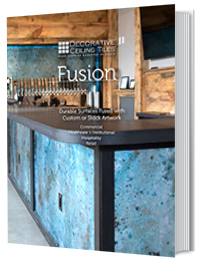How to Remove Tile Backsplash
Written by Milan Jara on 23rd Nov 2022

Are you installing a new backsplash to freshen up your kitchen? If so, understanding how to remove tile backsplash will be on your list of things to accomplish.
Backsplash tile is resistant to fire, water, stains, germs, mold, and mildew. Backsplashes are a practical design feature shielding walls from water, oil, and food damage in kitchens, bathrooms, and bar areas. Your tile backsplash removal experience will differ depending on your tile, its age and type, the installation techniques employed, and several other elements.
There are different tile removal techniques described here with step-by-step instructions. We hope that this information will assist you in deciding which tile removal technique is most appropriate for your particular circumstance.
Is It Easy to Remove Kitchen Backsplash Tiles?
The first thing you should do is evaluate the circumstances. This guide is likely only for you if your backsplash was correctly installed on drywall or incorrectly using liquid nails. In the worst-case scenarios, you should also pull out the drywall and start again.
How Are Backsplash Tiles Set Up?
Tile removal may be challenging and intimidating. You must consider several elements to determine whether you can remove your tile. Look for a hidden area where you can attempt to remove complete tiles, such as behind a stove or refrigerator.

The edge tile, where the backsplash ends, is another option. Try the technique listed below to try to remove a tile; if it won't come off or is damaged, it will be best to remove the tile along with the drywall. After that, you may put up fresh drywall and cover it with your new backsplash.
How to Remove Backsplash Tiles without Damaging the Wall
If you want to remove the tile backsplash quickly, you’ll need the following:
- 6-in-1 painter’s tool
- Hammer
- Chisels
- Utility knife (in case you need it)
- Gloves and safety glasses
- Drop cloth to protect the counter surface
- Drywall joint compound
- Dremel tool to remove old, thick grout lines
Method 1
1. Clean up the Area and Take out the Light Switches
Clear your counters, all other surfaces, and the sink. Before you begin, it’s a good idea to cover everything, including your worktops, sink, faucet, or bathtubs, with a drop cloth or a large piece of cardboard to protect it.
Removing tile is a laborious and messy job. Take the time to prepare and secure things before you start to contain the debris.
2. Pick the Starting Point and Start Removing the Old Tile Backsplash
Get your tools together and choose a starting point. Begin from the side where the existing tile backsplash edge is accessible. Starting at an edge where you can access the tiles may be a good idea. Use a hammer or rubber mallet to carefully begin breaking up the grout lines while using the sharp edge of the 6-in-1 painter's tool, chisel, or blade of your putty knife (whatever fits best). To begin removing the grout surrounding the previous backsplash, gently tap the hammer on the chisel.
To successfully remove your existing tile backsplash, take tiny, manageable steps and get as close to the tile as possible to avoid damaging the wall.
The tiles will become looser if the grout breaks up. When removing the grout, avoid using excessive force to avoid damaging the drywall sandwiched between the tiles. Be gentle when implementing this approach.
Tin:Approach from an angle to avoid hitting the drywall directly.
3. Scrape the Wall
Before installing your new kitchen backsplash, remove any remaining cement or mastic adhesive from the wall used to hold the tile in place. Start working to remove the remainder using your wall scraper and hammer.
If you have drywall or green board up and don't wish to spend a great deal of time scraping, another option is to remove the old green board and replace it. You might need to repair any drywall or green board ruined during the tile removal procedure.

To do this task properly, be patient and take your time. You might feel like you're wasting time because it may be a slow process. You could always just rip off the drywall, but it will add to the costs.
You'll see several areas where the drywall and very top layer of paint have peeled off. You can sand them down and apply drywall joint compound to flaking corners. Ensure it is flat because the tile will cover it with no sharp edges. Once the drywall dries, you may sand any raised edges down.
Method 2
Using a hammer, smash the tiles and tear off the drywall in pieces. This approach is messy (Unplug the sink and wear gloves and protective glasses!); however, it is a good alternative if you cannot cut around the backsplash's edge for whatever reason. Because of a light fixture, you might need help to reach the wall tile's border above the kitchen sink. Therefore you can use the hammer approach.
NOTE:Always exercise caution when deconstructing, especially around plumbing and electrical fixtures.
After picking up the large wall tile pieces, vacuum the remaining debris and mop and scrub the rest of the area, as a lot of drywall dust will be present.
Wrap Up
If you want to replace an old-fashioned and unkempt tile backsplash, it is possible to remove the tile backsplash without damaging drywall! As seen from the above instructions, it may be a sizable undertaking, but when it's completed, you'll be ready to install your new tile backsplash.





